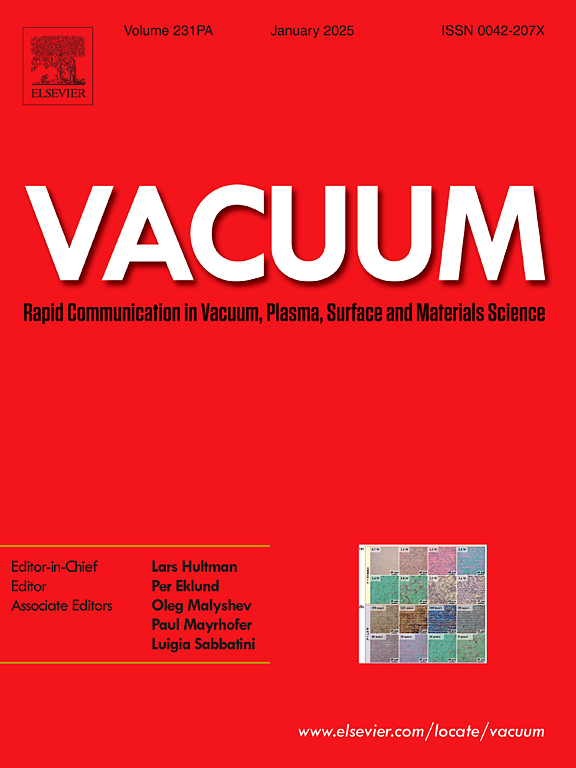Multi-strategy optimization model based on continuous cellular automaton and particle swarm optimization for controlling sputter etched profiles by focused ion beam
IF 3.8
2区 材料科学
Q2 MATERIALS SCIENCE, MULTIDISCIPLINARY
引用次数: 0
Abstract
With the development of micro-nano-scale devices, the precise manufacturing of complex topographies using focused ion beam (FIB) sputter etching has become an indispensable process requirement. The fabrication of curved micro-nano structures primarily employs bitmaps and stream files. However, due to the influence of complex effects, it is challenging to directly ascertain the process parameters. Therefore, this paper intensively analyzes the FIB manufacturing method, focusing specifically on the control methodology of bitmaps and stream files in the production of complex structures. Furthermore, the multi-strategy optimization model based on CCA-PSO (Continuous Cellular Automaton & Particle Swarm Optimization) is proposed, integrating simulation and optimization techniques to acquire process parameters and enhance manufacturing accuracy. The model leverages the characteristics of FIB sputter etching, simplifying the solution space, optimizing the search method, and increasing the iteration rate. Additionally, various complex structure manufacturing experiments were designed to validate the model's effectiveness and rationality. The advantages and limitations of the optimization methods and the three strategies are elaborated in detail, and their application in real manufacturing scenarios is also discussed, providing a reference for the further application of FIB manufacturing technology.
基于连续元胞自动机和粒子群优化的聚焦离子束溅射刻蚀控制多策略优化模型
随着微纳器件的发展,利用聚焦离子束(FIB)溅射蚀刻技术精确制造复杂的形貌已成为一种不可或缺的工艺要求。曲面微纳结构的制备主要采用位图和流文件。然而,由于受复杂效应的影响,直接确定工艺参数是一项挑战。因此,本文集中分析了FIB的制造方法,特别关注复杂结构生产中的位图和流文件的控制方法。在此基础上,建立了基于连续元胞自动机的多策略优化模型。提出了粒子群算法(Particle Swarm Optimization),将仿真与优化技术相结合,获取工艺参数,提高制造精度。该模型利用FIB溅射刻蚀的特点,简化了求解空间,优化了搜索方法,提高了迭代率。设计了各种复杂结构制造实验,验证了模型的有效性和合理性。详细阐述了优化方法和三种策略的优点和局限性,并讨论了它们在实际制造场景中的应用,为FIB制造技术的进一步应用提供参考。
本文章由计算机程序翻译,如有差异,请以英文原文为准。
求助全文
约1分钟内获得全文
求助全文
来源期刊

Vacuum
工程技术-材料科学:综合
CiteScore
6.80
自引率
17.50%
发文量
0
审稿时长
34 days
期刊介绍:
Vacuum is an international rapid publications journal with a focus on short communication. All papers are peer-reviewed, with the review process for short communication geared towards very fast turnaround times. The journal also published full research papers, thematic issues and selected papers from leading conferences.
A report in Vacuum should represent a major advance in an area that involves a controlled environment at pressures of one atmosphere or below.
The scope of the journal includes:
1. Vacuum; original developments in vacuum pumping and instrumentation, vacuum measurement, vacuum gas dynamics, gas-surface interactions, surface treatment for UHV applications and low outgassing, vacuum melting, sintering, and vacuum metrology. Technology and solutions for large-scale facilities (e.g., particle accelerators and fusion devices). New instrumentation ( e.g., detectors and electron microscopes).
2. Plasma science; advances in PVD, CVD, plasma-assisted CVD, ion sources, deposition processes and analysis.
3. Surface science; surface engineering, surface chemistry, surface analysis, crystal growth, ion-surface interactions and etching, nanometer-scale processing, surface modification.
4. Materials science; novel functional or structural materials. Metals, ceramics, and polymers. Experiments, simulations, and modelling for understanding structure-property relationships. Thin films and coatings. Nanostructures and ion implantation.
 求助内容:
求助内容: 应助结果提醒方式:
应助结果提醒方式:


